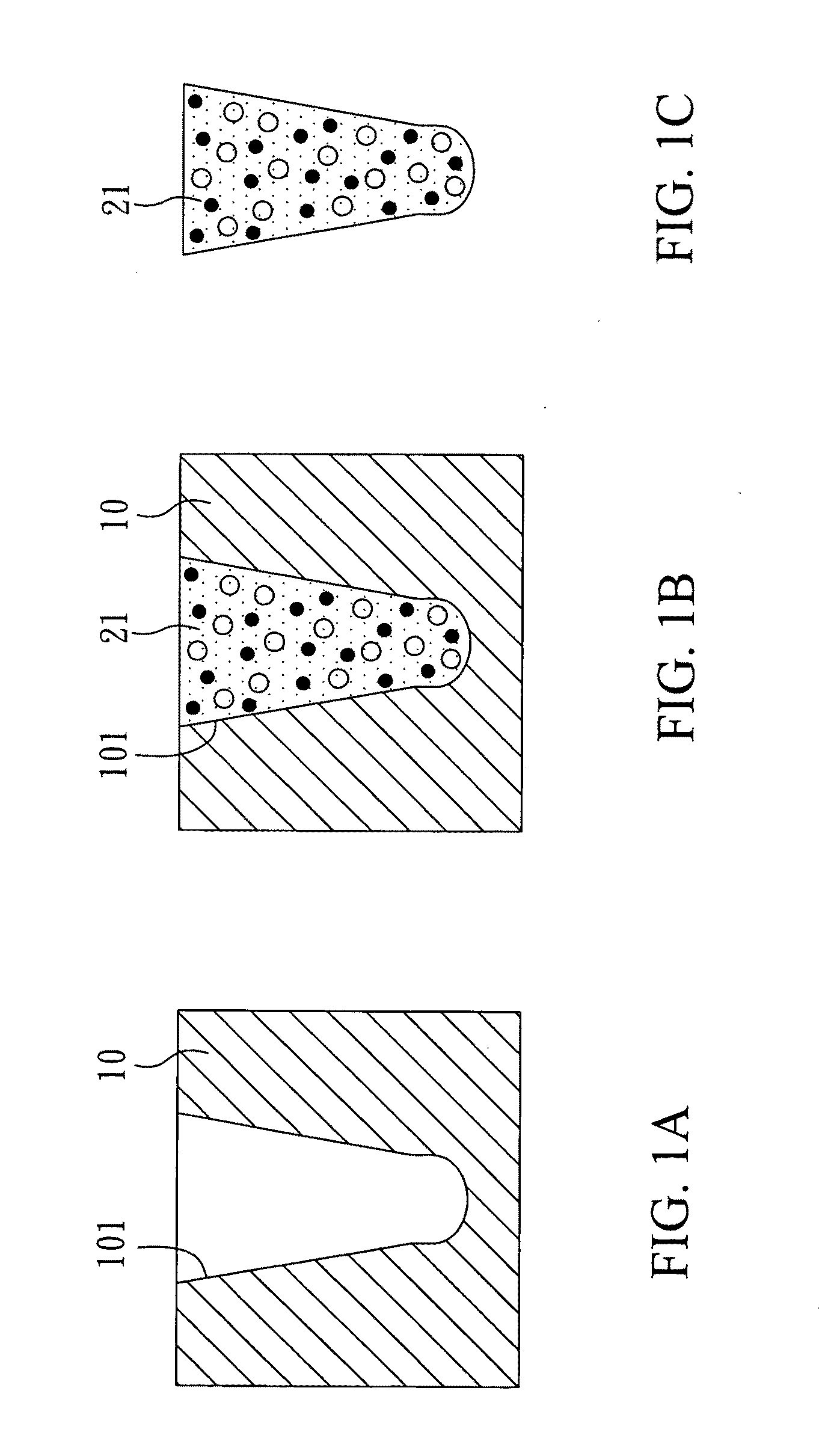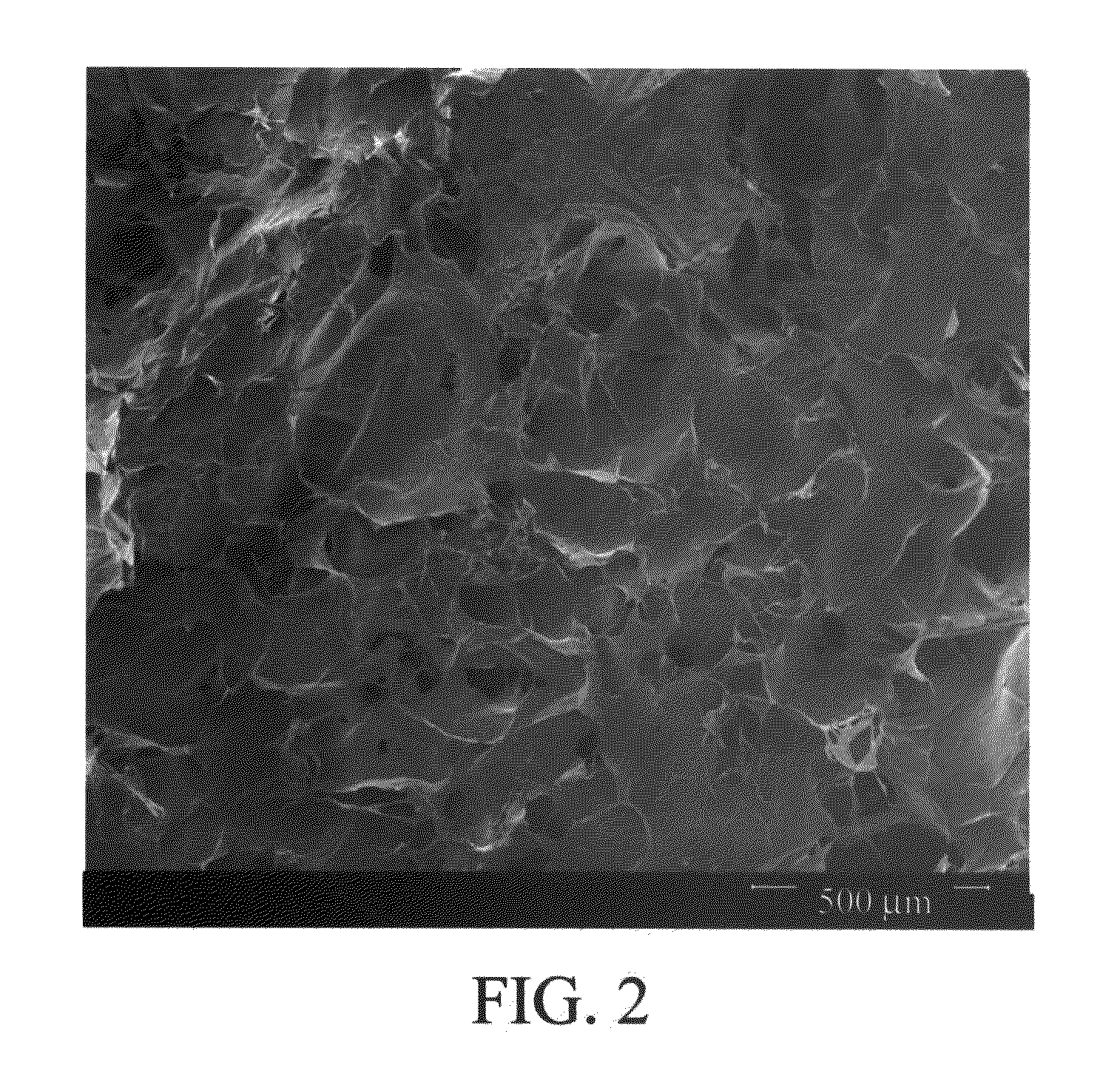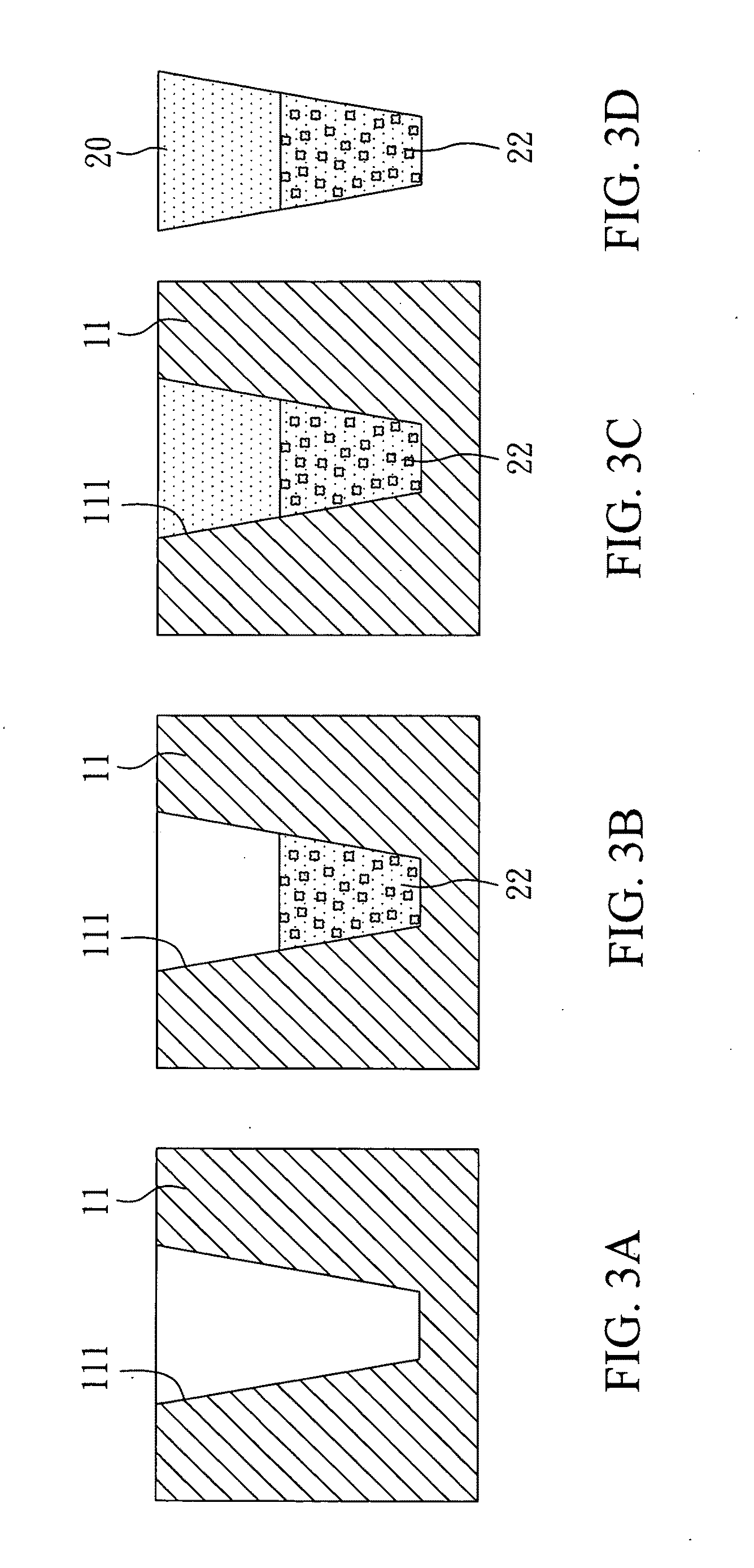Biodegradable filler for restoration of alveolar bones
a biodegradable, alveolar bone technology, applied in the direction of prosthesis, peptide/protein ingredients, drug compositions, etc., can solve the problems of inability to recover alveolar bones, and inability to absorb gauze, etc., to achieve the effect of high biocompatibility
- Summary
- Abstract
- Description
- Claims
- Application Information
AI Technical Summary
Benefits of technology
Problems solved by technology
Method used
Image
Examples
example 1
[0045]An HAP / β-TCP composite was used as supporting particles. The particle size of β-TCP ranged from 0.5 to 2.0 mm, and that of HAP ranged from 0.075 to 0.150 mm. A ratio of β-TCP to HAP was 60:40% by weight.
[0046]The HAP / β-TCP composite was added into the cross-linked collagen fiber paste with 30±0.2 mg / mL collagen. A ratio of the cross-linked collagen fiber paste to the HAP / β-TCP composite was 30%:70% by weight.
[0047]With reference to FIGS. 1A to 1C, there is shown a method for manufacturing a biodegradable filler for restoration of alveolar bones in the present invention. First, as shown in FIG. 1A, a shaping mold 10 was prepared. The shaping mold 10 had a shaping hollow 101. An internal diameter of the shaping hollow 101 reduced from the opening to the inside, and thus the shaping hollow 101 was similar to a horn. In addition, the shaping hollow 101 had an arc bottom. Therefore, a filler deposited in the shaping hollow was in a form of a bulbous-headed cone. The opening diamete...
examples 2 and 3
[0051]HAP (Example 2) or bioactive glass (Example 3) was used as supporting particles. The particle size of HAP ranged from 0.075 to 0.15 mm, and that of HAP ranged from 150 to 600 μm.
[0052]The HAP or bioactive glass was added into the cross-linked collagen fiber paste with 30±0.2 mg / mL collagen. A ratio of the cross-linked collagen fiber paste to the HAP or bioactive glass was 40%:60% by weight.
[0053]With reference to FIGS. 3A to 3D, there is shown a method for manufacturing a biodegradable filler for restoration of alveolar bones in the present invention. First, as shown in FIG. 3A, a shaping mold 11 was prepared. The shaping mold 11 had a shaping hollow 111. An internal diameter of the shaping hollow 111 reduced from the opening to the inside. In addition, the shaping hollow 111 had a flat bottom. Therefore, a filler formed in the shaping hollow 111 was in a form of a flat-headed cone. The shaping mold 11 was made of iron that could keep the mold stable during freeze-drying.
[0054...
example 4
[0056]The HAP / β-TCP composite and the bioactive glass were used as supporting particles. The particle size of the HAP / β-TCP composite ranged from 0.5 to 1.0 mm, and that of the bioactive glass ranged from 150 to 600
[0057]The HAP / β-TCP composite and the bioactive glass were added into the cross-linked collagen fiber paste with 30±0.2 mg / mL collagen. A ratio of the cross-linked collagen fiber paste to the HAP / (3-TCP composite to the bioactive glass was 30%:35%:35% by weight.
[0058]With reference to FIGS. 6A to 6G, there is shown a method for manufacturing a biodegradable filler for restoration of alveolar bones in the present invention. First, as shown in FIG. 6A, a shaping mold 12 was prepared. The shaping mold 12 had a shaping hollow 112. An internal diameter of the shaping hollow 112 was approximately identical from the opening to the inside, but it reduced from the inside to the bottom. Therefore, a filler deposited in the shaping hollow 112 was in a form of a bullet-shaped column....
PUM
| Property | Measurement | Unit |
|---|---|---|
| thickness | aaaaa | aaaaa |
| particle size | aaaaa | aaaaa |
| particle size | aaaaa | aaaaa |
Abstract
Description
Claims
Application Information
 Login to View More
Login to View More - R&D
- Intellectual Property
- Life Sciences
- Materials
- Tech Scout
- Unparalleled Data Quality
- Higher Quality Content
- 60% Fewer Hallucinations
Browse by: Latest US Patents, China's latest patents, Technical Efficacy Thesaurus, Application Domain, Technology Topic, Popular Technical Reports.
© 2025 PatSnap. All rights reserved.Legal|Privacy policy|Modern Slavery Act Transparency Statement|Sitemap|About US| Contact US: help@patsnap.com



